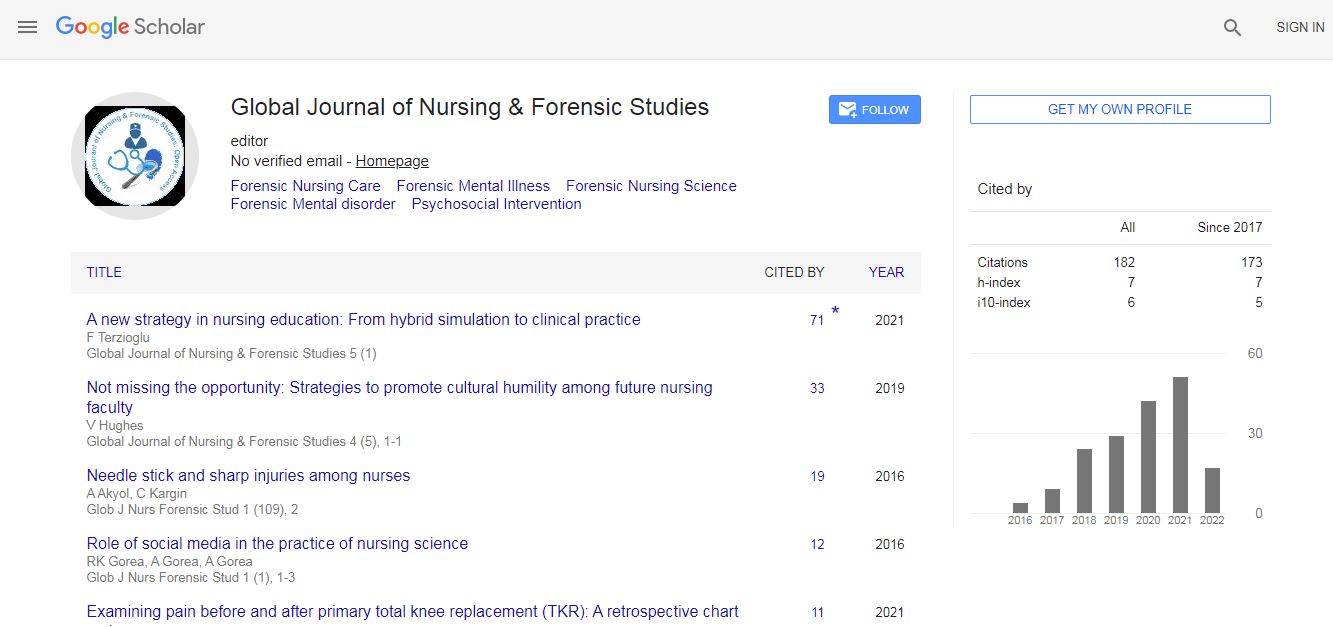Our Group organises 3000+ Global Conferenceseries Events every year across USA, Europe & Asia with support from 1000 more scientific Societies and Publishes 700+ Open Access Journals which contains over 50000 eminent personalities, reputed scientists as editorial board members.
Open Access Journals gaining more Readers and Citations
700 Journals and 15,000,000 Readers Each Journal is getting 25,000+ Readers
Google Scholar citation report
Citations : 82
Optometry: Open Access received 82 citations as per Google Scholar report
Indexed In
- Google Scholar
- RefSeek
- Hamdard University
- EBSCO A-Z
- Euro Pub
- ICMJE
Useful Links
Recommended Journals
Related Subjects
Share This Page
Prevalence and risk factors for myopia and hyperopia in an adult population in southern India
3rd International Conference and Expo on Optometry & Vision Science
Sanil Joseph
Aravind Eye Care System, India
ScientificTracks Abstracts: Optom open access
Abstract
Statement of the Problem: Myopia is the most common cause of refractive errors in both children and adults in many countries. Comparisons of adult myopia prevalence across countries are complicated by variations in the age ranges of populations studied, definitions of myopia and secular trends in environmental risk factor. The aim of this study was to investigate prevalence and risk factors for myopia, hyperopia and astigmatism in southern India. Methodology: Randomly sampled villages were enumerated to identify people aged ≥40 years. Participants were interviewed for socioeconomic and lifestyle factors and attended a hospital-based ophthalmic examination including visual acuity measurement and objective and subjective measurement of refractive status. Myopia was defined as spherical equivalent (SE) worse than -0.75 diopters (D) and hyperopia was defined as SE ≥+1D. Findings: The age-standardized prevalence of myopia and hyperopia were 35.6% (95% CI: 34.7–36.6) and 17.0% (95% CI: 16.3– 17.8) of those with myopia, 70% had advanced cataract. Of these 79% had presenting visual acuity (VA) <6/18 and after best correction, 44% of these improved to ≥6/12 and 27% remained with VA <6/18. In multivariable analyses excluding advanced cataract, increasing nuclear opacity score, current tobacco use and increasing height were associated with higher odds of myopia. Higher levels of education were associated with increased odds of myopia in younger people and decreased odds in older people. Increasing time outdoors was associated with myopia only in older people. Increasing age and female gender were associated with hyperopia and nuclear opacity score, increasing time outdoors, rural residence and current tobacco use with lower odds of hyperopia. Conclusions: In contrast to high income settings and in agreement with studies from low income settings, we found a rise in myopia with increasing age reflecting the high prevalence of advanced cataract. This suggests that older people would benefit more from cataract removal than spectacle correction. Recent Publications: 1. Morgan I G, Iribarren R, Fotouhi A and Grzybowski A (2015) Cycloplegic refraction is the gold standard for epidemiological studies. Acta ophthalmologica 93(6):581-5. 2. Foster P J and Jiang Y (2014) Epidemiology of myopia. Eye 28 (2): 202-8. 3. Pan C W, Cheng C Y, Saw S M, Wang J J and Wong T Y (2013) Myopia and age-related cataract: a systematic review and meta-analysis. American Journal of Ophthalmology 156 (5): 1021-33. 4. Pan C W, Ramamurthy D and Saw S M (2012) Worldwide prevalence and risk factors for myopia. Ophthalmic & physiological optics: the journal of the British College of Ophthalmic Opticians 32 (1): 3-16. 5. Vashist P, Talwar B, Gogoi M, Maraini G, Camparini M, Ravindran R D, et al. (2011) Prevalence of cataract in an older population in India: the India study of age-related eye disease. Ophthalmology 118 (2): 272-8.Biography

 Spanish
Spanish  Chinese
Chinese  Russian
Russian  German
German  French
French  Japanese
Japanese  Portuguese
Portuguese  Hindi
Hindi 